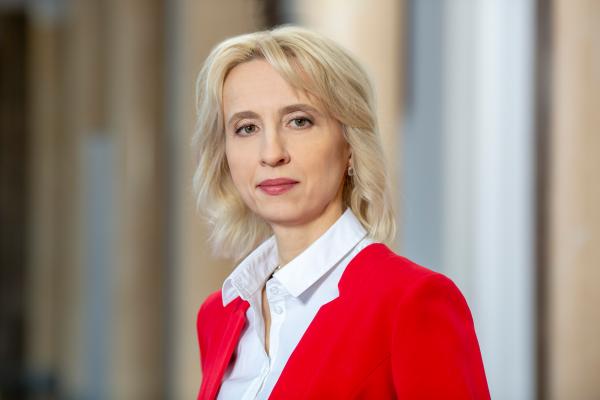EIB Vice-President Teresa Czerwinska's speech on Financing instruments during "Investing in Climate Action" conference
Check against delivery

Dear esteemed colleagues,
Dear panellists,
Dear ladies and gentlemen,
Let me start with a warm thank you for the kind invitation to this prestigious and one-of-a-kind event. It is a great pleasure to open our second session for today, on a subject very close to our hearts at the European Investment Bank – or since recently the EU Climate Bank – which is combating climate change by putting innovation and sustainable investment at centre of our efforts.
While we already know a lot of what needs to be done to achieve our climate neutrality targets, knowing a lot is not enough to be wise – as Heraclitus emphasized. We need to be able to turn our knowledge into tangible and scalable actions – and I believe that the recent EIB’s achievements in the field of innovation and green finance can offer useful guidance in this respect.
Ladies and gentlemen, innovation – as we know it – is not homogenous. Even though it may seem so, breakthrough technologies are not spontaneous. You can’t cherry-pick them. They don’t happen everywhere and every day. They are rather a mixture of good ideas, hard work and well-tailored finance – oftentimes squared with the entrepreneurial spirit and luck.
Yet you can find entrepreneurs aiming to create the next technological unicorn in nearly every corner of the world. This is the market reality – plenty of ideas but only a handful have a chance to survive. But once they do, they can make material difference to how we live and work, and possibly set us up on the green path.
There are two main elements of well-designed innovation finance agenda, which I strongly believe can help viable ideas overcome “the valley of death”. They both aim at improving the investment ecosystem, and – as you can imagine – they both come from the EIB’s toolkit.
Firstly, while we have only scarce public resources, the challenges ahead of us are enormous. Therefore, we need to be able to create sufficient incentives for co-investing for private market players, supporting the widest possible range of projects. We need to fully exploit the potential of capital markets.
The EIB has a strong track record in delivering investment alongside other actors, including the private sector. To date, internal analysis suggests that every €1 of our green financing is associated with around €4 of additional finance from other sources. I would like to draw your attention to the two financial instruments, which could add tailwind to our climate efforts.
Not later than 3 months ago, we reached an end of the European Fund for Strategic Investments. EFSI was expected to mobilize €500 billion of investments between 2015 and 2020. We managed to mobilize €47 billion more.
The success of the mandate stems from the very smart and efficient use of EU risk guarantee squared with the EIB’s unique ability to mobilize private investors. Thanks to this collaboration, the EIB was able to expand its activity to more risky – but also more innovative – portfolios by as much is 30%.
This business model can be further replicated under the forthcoming InvestEU programme. EFSI demonstrated that nothing will stop us if we work together.
The second novel instrument, which will also continue to play an important role in mobilizing private resources, are of course green bonds – pioneered by the EIB in 2007. We have now issued more than €33 billion in our green bonds to date – that is in our Climate Awareness Bonds – making us their largest multinational issuer. And we continue our work in this area by expanding the CAB-eligible sectors to encompass Research, Development and Innovation, as well as selected low-carbon transport projects. This is where we can make a material difference.
Secondly, perhaps paradoxically, innovation finance is not all about money. Confidence comes from predictability, and predictability comes from good and well-prepared projects. You can’t overestimate the value of a good advice in this respect.
What I mean by good advice at the investment level is the assistance and expert knowledge deployed to national and local authorities, project promoters and financial intermediaries:
- to develop and implement investment programmes and projects,
- to enhance their institutional set-up or technical capacities
- and to improve the efficient use of EU funds.
The EIB’s current advisory portfolio includes nearly 1,000 assignments. The support ranges from sustainable transport, through energy efficient housing to floating windfarms that can unlock clean wind power for the dozens of countries whose coastal waters are too deep for traditional offshore facilities. We remain ready to scale up our efforts in the advisory direction – to maximize the impact and chances of success at a project level.
Let me conclude here by reiterating that we are really at the critical moment in history to catalyse the green revolution. But green revolution will not succeed without innovation.
I firmly believe that with properly designed financial architecture – along the two lines I just mentioned – we can spur the new wave of innovative projects, with the potential to move the world two – or even three – steps closer to full climate neutrality.
With this in mind, it is my great pleasure to open the second session of the day. I look forward to following the discussions and their outcome on this important topic.
Thank you very much